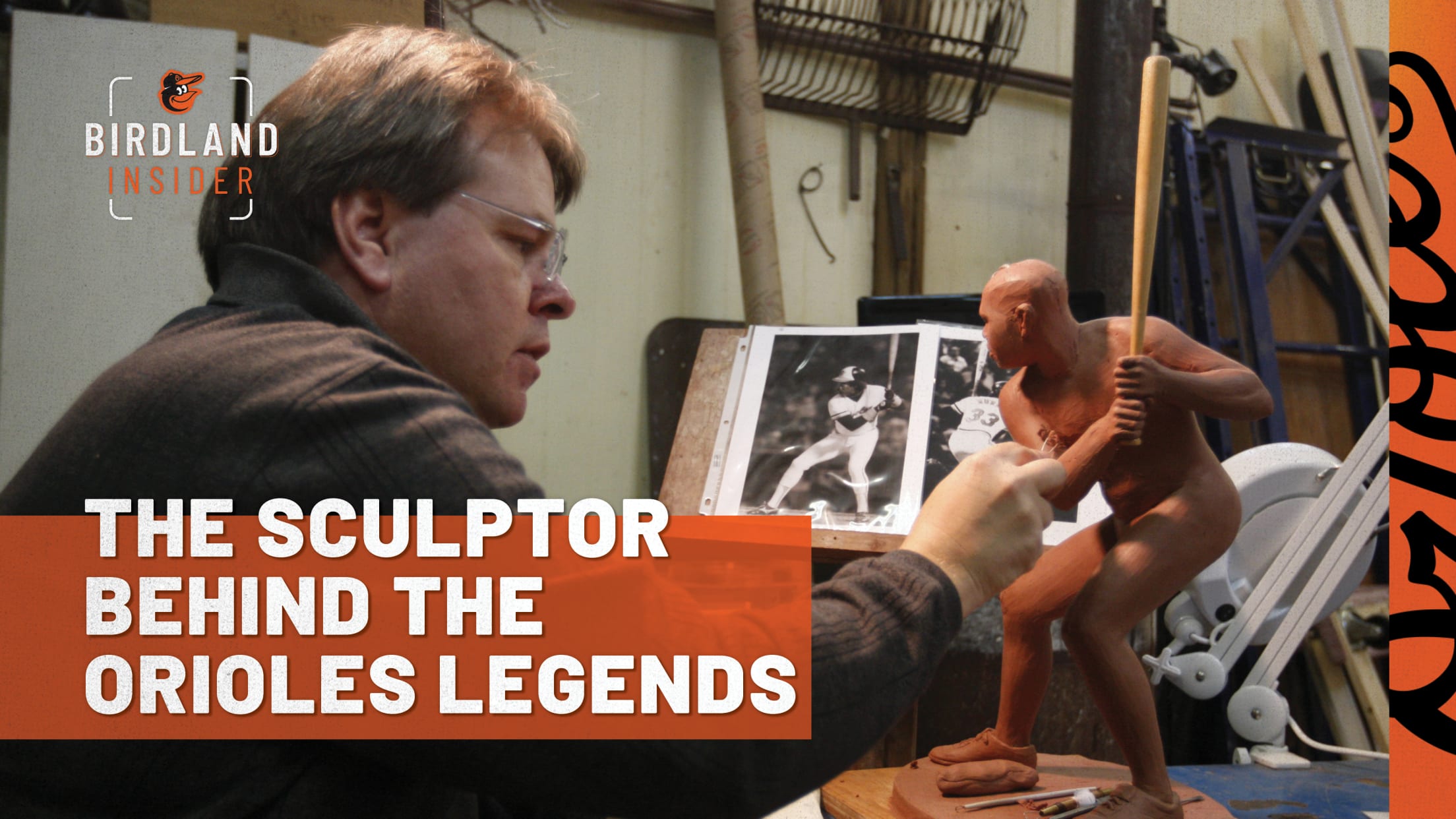
The Sculptor Behind the Orioles Legends: Marylander Toby Mendez Turns Hall of Famers to Bronze
Creating sculptures of iconic sports figures is nothing new to Antonio Tobias “Toby” Mendez. After all, he’s already fashioned the likeness of Nolan Ryan that graces the Texas Rangers’ ballpark, Don Shula at Hard Rock Stadium in Miami, and “The Teammates” – Ted Williams, Dom DiMaggio, Bobby Doerr and Johnny Pesky – outside Fenway Park in Boston.
So molding the look of the Orioles’ six Hall of Famers who were cast in bronze during the 20th anniversary season at Camden Yards in 2012 was just another project for the then-49-year-old sculptor, right?
Not exactly. It’s not just another project when you’re based in Maryland, grew up watching many of your subjects play, and have season tickets to see the Orioles – and your work – on a regular basis at Camden Yards.
“It was really like six individual projects in one, so the work was really more about time management,” Mendez said. “But I think of the Orioles as being in my backyard. Because they are so close, I know so many more of my family and friends will see these, so it makes the project more important to me.
“The key thing, for myself and the Orioles, was that the poses had to be thought of as iconic, that the person was at the height of his career in the activity he was known for,” he said.
The Orioles sculpture project began before the 2010 season had ended, with Mendez and team officials sifting through hundreds of photos as well as video to decide the position and look each would have.
Actual work on the figures began in spring 2011. Starting with a 20- to 24-inch clay maquette – about one-fourth the size of the final sculpture – Mendez creates a detailed likeness of his subject. From there, the piece is enlarged through computer and laser imaging (about 40,000 measurements are taken) into a full-size foam model, onto which a light layer of clay is added and the subject’s features are enhanced. Several generations of molds are then made, and the bronze is poured into the final mold to create the sculpture. Finally, the patina – an oxidation of the bronze that gives the work its color – is added.
Mendez worked with New Arts Foundry in the Hampden area of Baltimore City, where the bronze was cast.
All six Orioles legends – Frank Robinson, Brooks Robinson, Earl Weaver, Jim Palmer, Eddie Murray and Cal Ripken – viewed their clay models and gave suggestions. That’s not always the case, as when a subject has passed away, but it’s a part of the process that Mendez appreciated.
In many ways, the little nuances that the subjects provided – how Palmer gripped his fastball, the ever-present tape on Murray’s finger, the direction of Ripken’s eyes in relation to the ball – helped shape the clay figures as much as Mendez’s hands, knives and files.
“It’s great when you can talk to people and get feedback from the subject,” Mendez said. “We’ve had all of them and their families give feedback. It allows us to get better detail. We don’t have to assume anything about their pose.”
Born in Denver in 1963, Mendez spent most of his early childhood in Asia before his family moved back to the United States, settling in Washington County, Maryland, in 1974. While at Boonsboro Senior High School, Mendez took part in a gifted and talented arts program at Goucher College for four summers, an experience that guided his career path.
After graduating from high school, Mendez apprenticed under Academy award-winning makeup sculptor John Chambers (known for such films as “The Island of Dr. Moreau” and “The Planet of the Apes” series), and then received his Bachelor’s of Fine Arts degree from the School of Art Institute in Chicago. It was there that he learned the centuries-old process of bronze casting and received his first commissioned work.
He set up his own studio in Knoxville, Maryland (near Boonsboro) in 1988 and began creating both publicly and privately commissioned sculptures. In addition to his works of sports greats, some of Mendez’s more famous works include sculptures of entertainer Danny Thomas at St. Jude’s Hospital in Memphis, Tennessee; Justice Thurgood Marshall at the state house in Annapolis (as well as a bust at BWI-Thurgood Marshall Airport); and panels of the U.S. Navy Memorial in Washington, D.C.
Is there a difference working with athletes as opposed to other famous figures?
“The significant difference is that with these athletes, their bodies, figures, and poses are as recognized as their portraits, so you have to go into greater detail to make it look like the subject,” he said.
Those who visit Legends Park at Camden Yards will see that detail.

